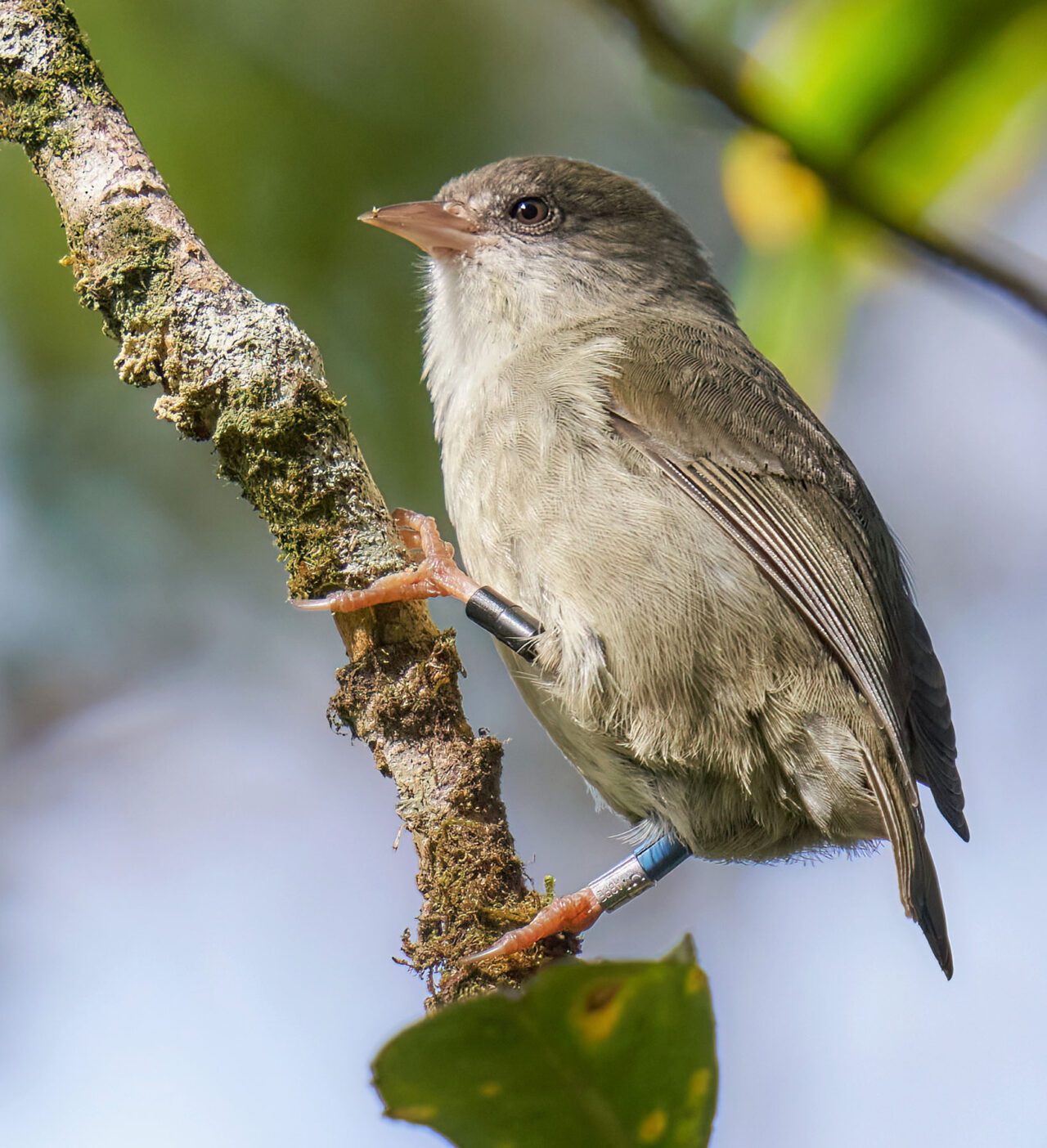Tinder for Akikiki
January 4, 2024
From the Winter 2024 issue of Living Bird magazine. Subscribe now. This story was adapted from a post on TWS Wildlife News, published by The Wildlife Society.
A study model that’s being called an avian version of the dating app Tinder is showing that giving females a bit of choice between prospective mates can drastically improve the output of a captive breeding program for a critically endangered species of Hawaiian honeycreeper.
“If we pair the female with the male that she spends more time with, we get more eggs at the end of the season,” said Alison Greggor, a researcher at the San Diego Zoo Wildlife Alliance.
Akikiki live only in the mountains on the island of Kauai, and only a few dozen remain in the wild, with extinction predicted within the next few years as wildlife managers struggle to find a way to stop the spread of malaria-carrying mosquitoes. In a last-ditch effort to save the species, wildlife managers from a multi-group partnership brought some Akikiki eggs into captivity in 2015. Given the low number of Akikiki left, scientists are looking for ways to improve the fertility of birds in captivity, with hopes of one day releasing them back into the wild.
Most research on captive breeding programs focuses on maximizing the genetic match between mates. But in a study published in the journal Conservation Science and Practice last March, Greggor and her colleagues examined whether allowing a female Akikiki to choose her mate would improve fertility.
The setup is like Tinder for birds: Instead of swiping left or right, the researchers put the female in an aviary in the middle, sandwiched by two enclosures with one male each on either side of her—she could choose the male on the right or the left.
At first, the researchers weren’t sure if they’d be able to tell the females’ preferences. They placed perches near the males on either side and watched, observing interactions like whether females would share food with one male over the other. They found that the female’s choice was best predicted by the male she spent more time next to. And by the end of the breeding season, the researchers found that females paired with their preferred mate would lay four to seven eggs on average, while the females with a nonpreferred male only laid two to three eggs.
“Quite a big difference,” Greggor said, and one that could bring a big boost for the captive breeding program. She points out that this kind of research demonstrates that successful breeding isn’t only about making a good genetic match, and that mate choice can play a large role “for improving breeding outcomes.”

All About Birds
is a free resource
Available for everyone,
funded by donors like you
American Kestrel by Blair Dudeck / Macaulay Library


